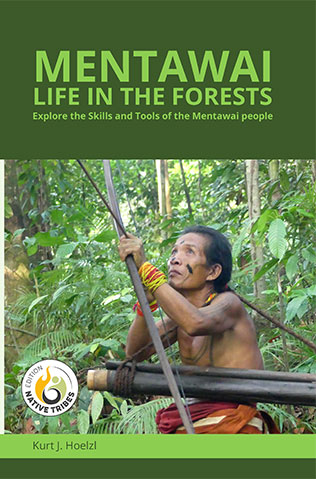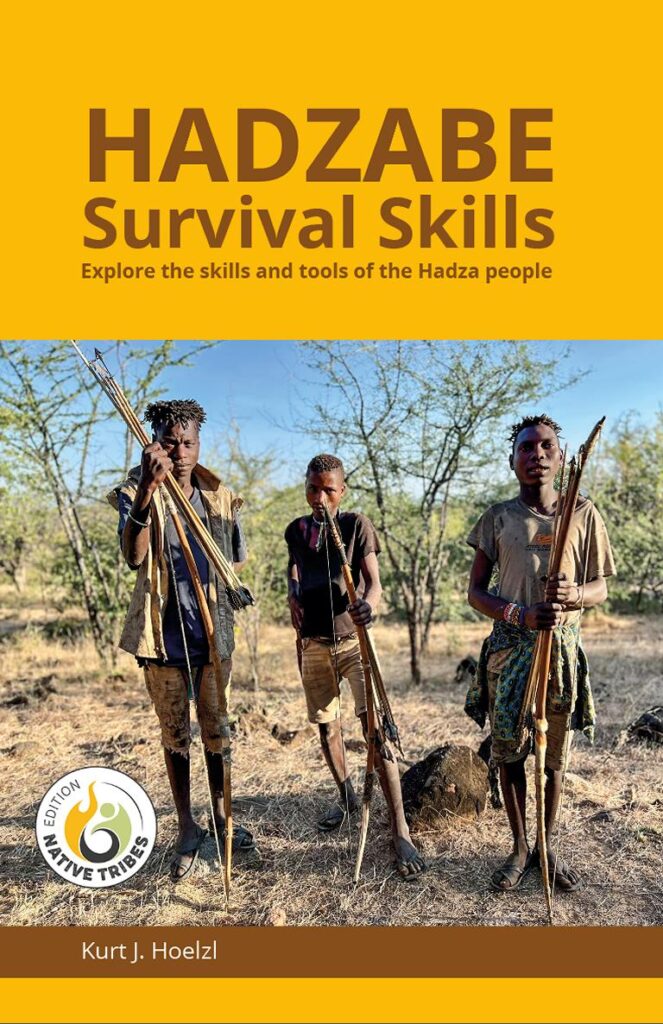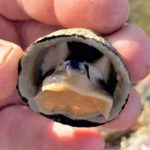The Long-spine porcupinefish (Diodon holocanthus) is one of the many seafood organisms local people catch or collect at low tide in shallow waters around Zanzibar island. This fish is not specifically searched for, but it will be happily speared and taken home for food if found in shallow waters.
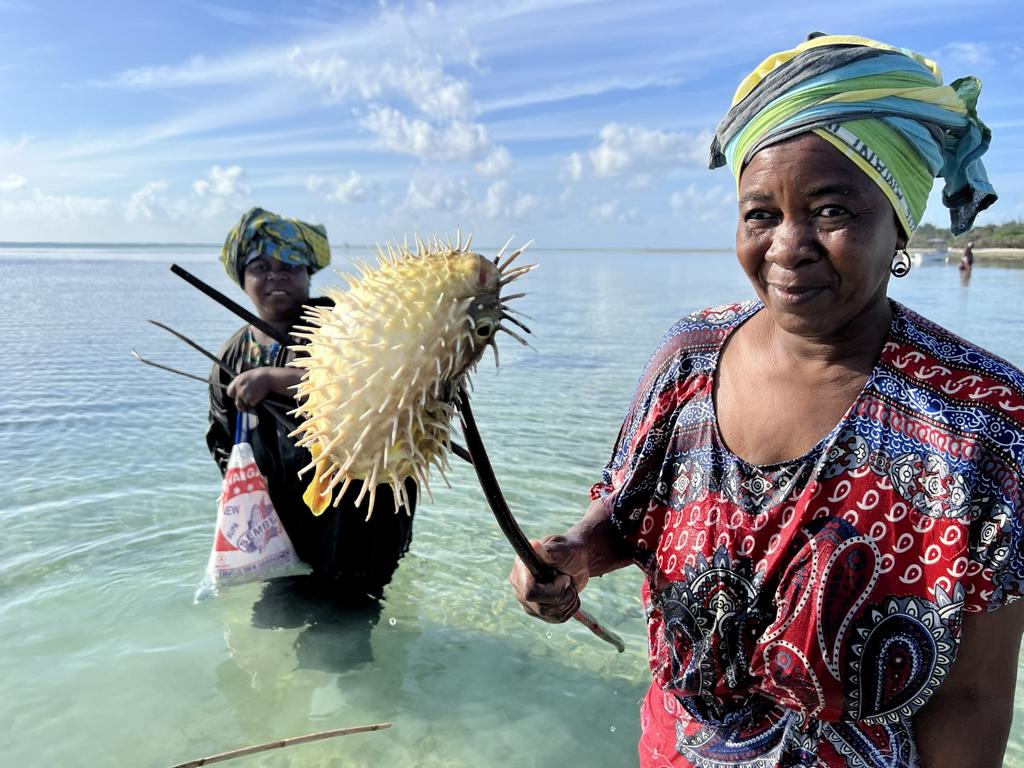
According to the local women we went beachcombing with, two species of pufferfish live in the lagoons. One is called ‘Nungu’ in Swahili, and the other ‘Bunju’. We caught and ate Nungu, the Long-spine porcupinefish (Diodon holocanthus), without any poisonous effect. Bunju is the ‘White-spotted pufferfish’ (Arothron hispidus) with no spines. Furthermore, Bunju is toxic and is not eaten by them. Bunju was translated by the English-speaking boy who introduced me to his auntie as the ‘Black ballfish’.
The available literature about porcupinefish in Zanzibar and Pemba does not clarify whether Nungu or Bunju is the poisonous one. There are mixed and also opposite opinions. My above information that Nungu is eaten and Bunju is poisonous is based on the first-hand information I got from the lady collecting them. Furthermore, her nephew even wrote the information down in my notebook. I’m therefore convinced, that Nungu is the edible Long-spine porcupinefish.
Where to find Long-spine porcupinefish?
Diodon holocanthus can be found circumpolar in tropical and subtropical waters. The species is widely distributed and lives from the intertidal zone to 200 meters. However, it prefers to live on muddy sea bottoms, estuaries, lagoons, or coral and rocky reefs.

The island of Zanzibar is surrounded by coral reefs, which are visualized in the following image in yellow color.

Between these coral reefs and the coastline, the seabed of intertidal waters consists of sand, mud, and limestone and is often covered by seagrass. This habitat supports a rich intertidal flora and fauna.

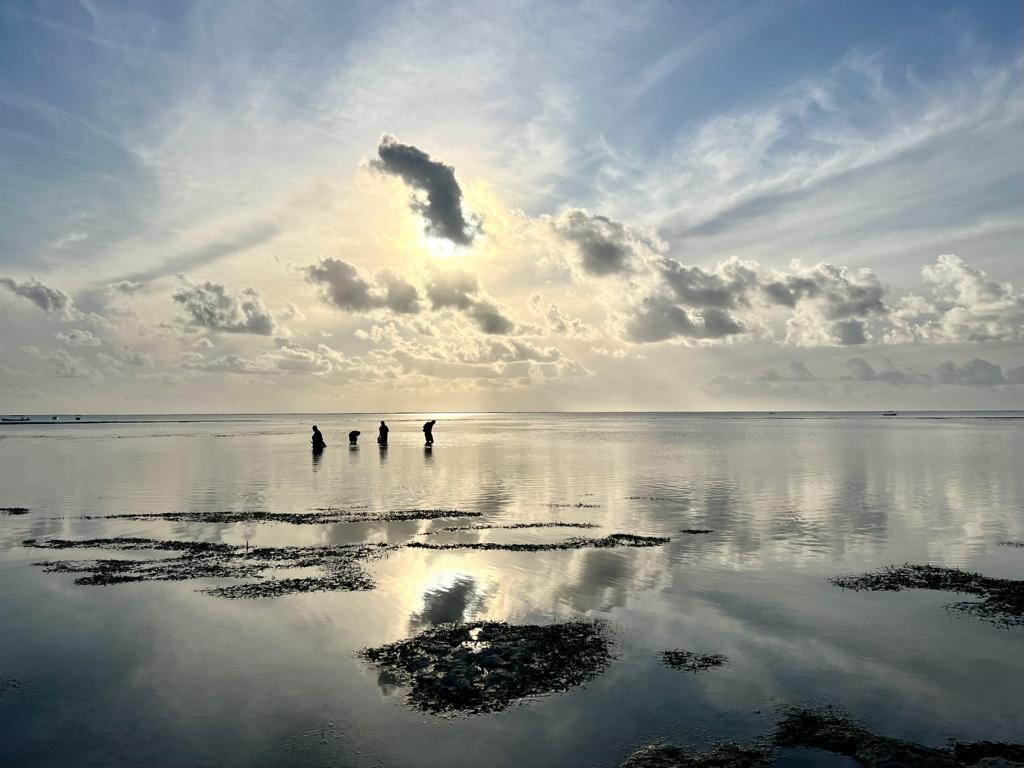
Depending on the low tide, local women walk out into the intertidal zone every morning and collect various species of mollusks, cephalopods, crustaceans, seaweed, and fish. The author of this article was attending them for two beachcombing trips at the Pingwe village coastline.
Fish description

The Long-spine porcupinefish (Diodon holocanthus) has a variety of common English names, which include Balloon porcupinefish (South Africa), Freckled porcupinefish, Puffer porcupinefish, and others. It is yellowish-pale with black splotches and brownish stripes around each spine. These spines are about 4cm / 1 ½’’ long and depressable. Both jaws are fused to a parrot-like beak, with which the fish can break open mollusk shells, sea urchins, etc. Adult Long-spine porcupinefish can attain a length of up to 50cm / 20’’.
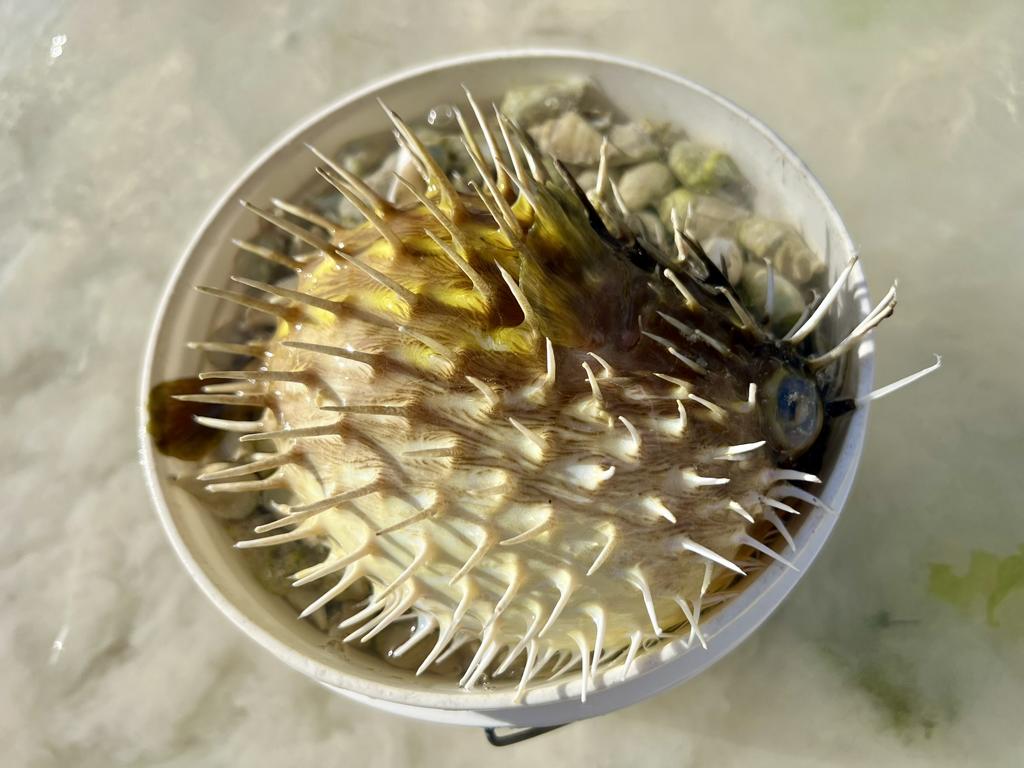
Like other species of pufferfish, they can swallow water or air and inflate themselves. This enlarges them and makes it more difficult for predators to swallow them. It furthermore raises the spines, which presents them as an unpalatable-looking meal.
Long-spine porcupinefish and their poison
For further protection, these fish have a symbiotic relationship with types of bacteria such as Pseudoalteromonas tetraodonis, which produces tetradotoxin – a potent neurotoxin. This poison could accumulate in their skin and some of their organs. The Webpage ‘Endless Ocean Wiki‘ reports that Diodon holocanthus has poisonous relative species, but the long-spine porcupinefish is not. There are also some reports of ciguatera poisoning by Long-spine porcupinefish.
How to catch them?
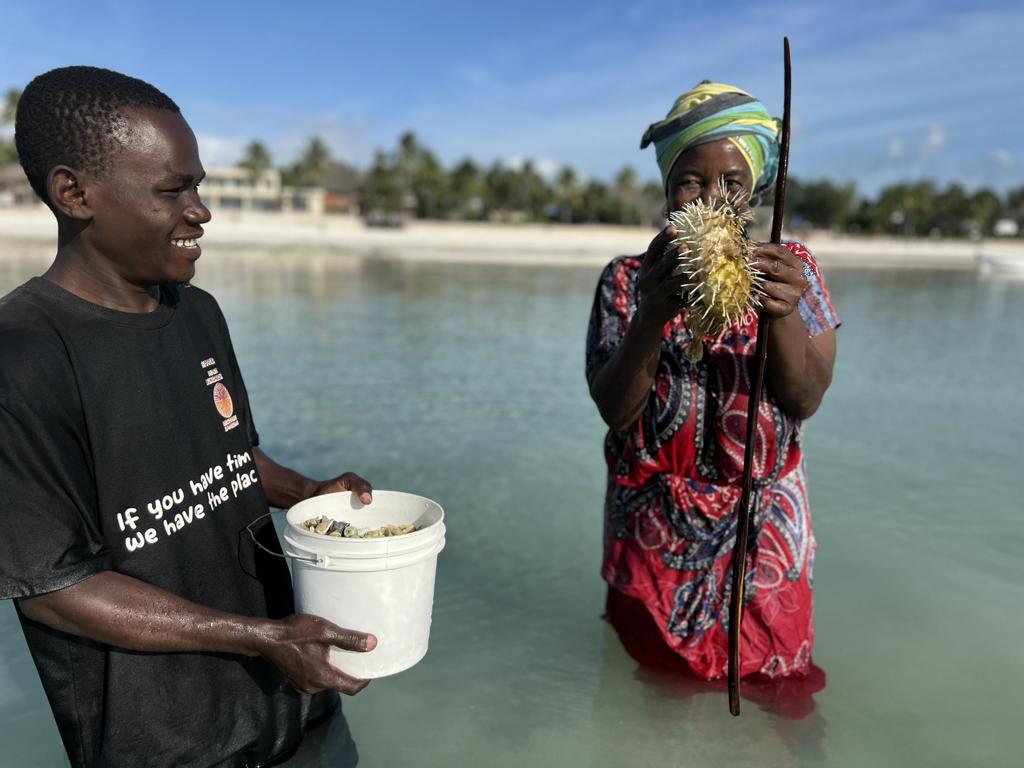
Diodon holocanthus primarily feeds at night. At low tide in the morning, they lazily hide between rocks or coral or swim slowly over muddy bottoms. However, they can accelerate very fast or swim tight turns if necessary.
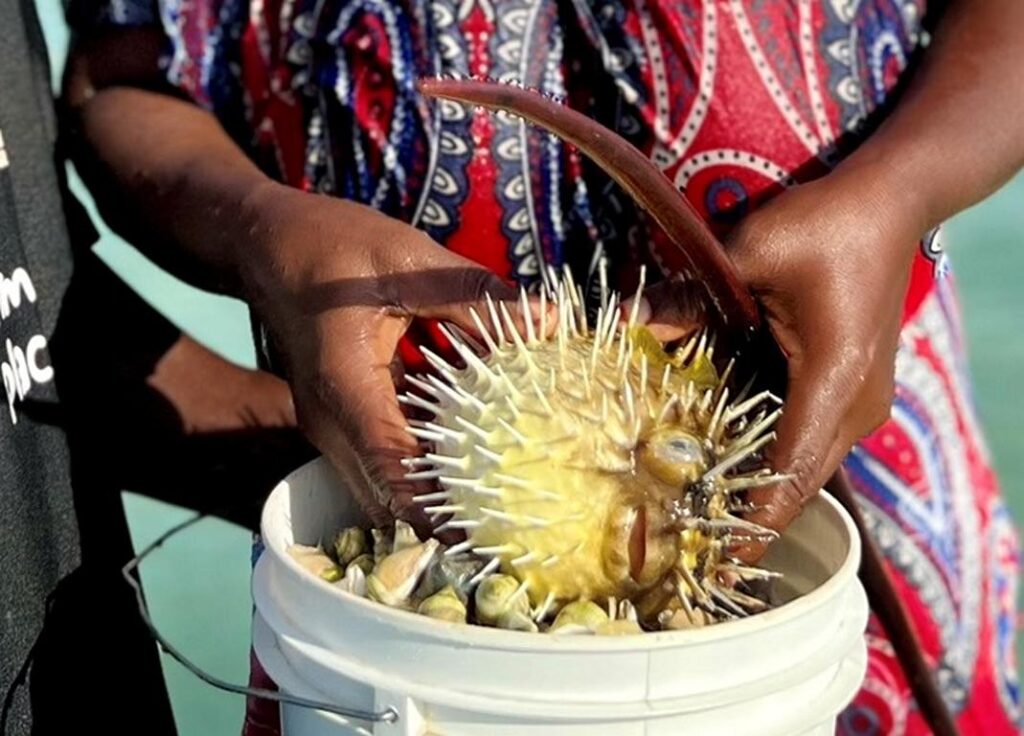
At the intertidal zones of Zanzibar, beachcombers walk slowly in knee-deep waters. If they see a long-spined porcupinefish, they try to stab their bent stick into one eye. That is the least tough part of the fish’s body, and it keeps the fish locked onto the stick.
Preparation for food
The beachcomber women of Zanzibar are not certified chefs for preparing porcupine fish, like in Japan. However, they have fed this fish species to their children and family for ages. Therefore, we assumed it would be safe if they prepared it for us.
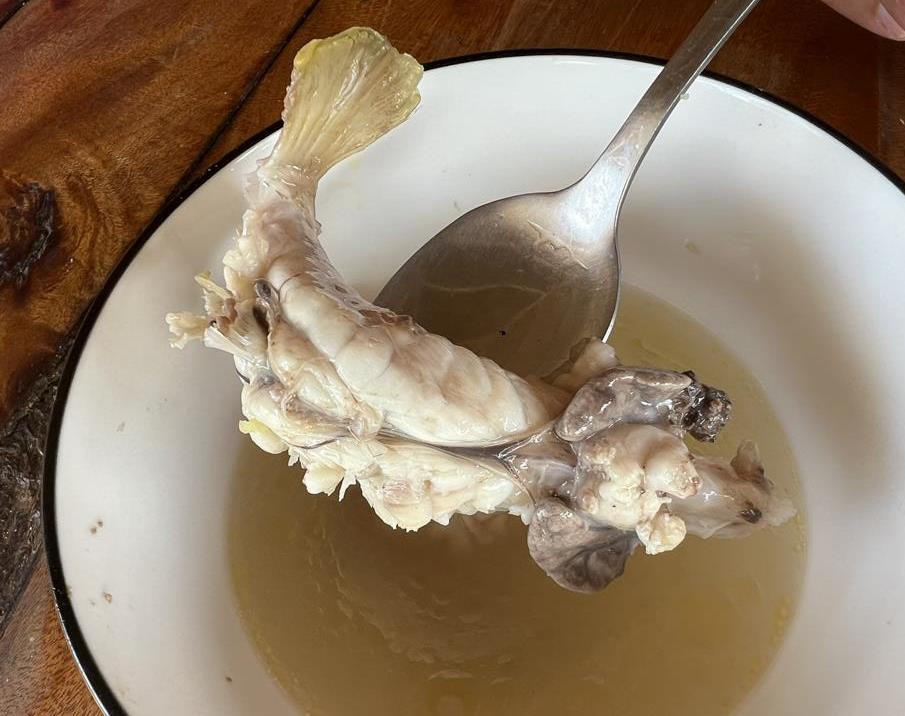
Preparing the porcupinefish for cooking was as follows: Starting from the head, the whole skin was slipped over the head and body towards the tail, where the inverted skin was cut off. The skin mucus did never touch the edible parts inside. Then, all offals, except two symmetric organs, which appeared to be the liver, were removed and discarded. This only internal organ left for eating can be seen in the image as the two brownish pieces left and right behind the head and below the ‘hands’ of the pectoral fins.
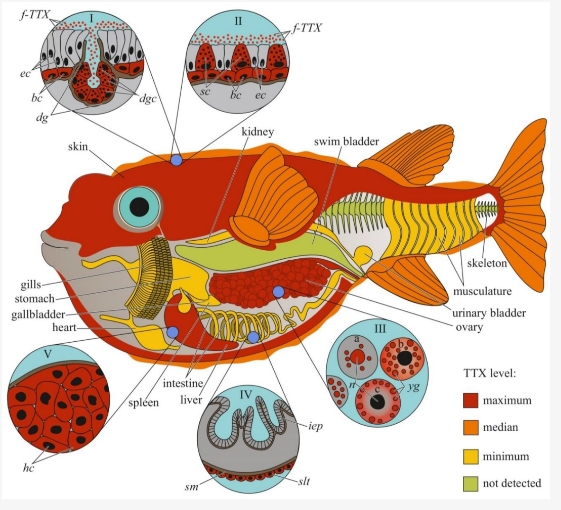
According to Melnikova, as seen in the schematics above, the skin, ovaries, gonads, and liver contain the highest amounts of tetrodotoxin at other species of pufferfish. Nevertheless, after preparing soup from the remaining parts, we ate not only the meat, fins, and gills but also both livers, and we did not feel any adverse effects. This live test indicates that the liver of Diodon holocanthus at the Zanzibar eastern coastline is not poisonous after boiling.

The meat was mainly around the vertebrate and head and was white, firm, and nearly jelly-like. Its taste was sweet and neutral. Much lime juice was used to prepare the soup, which smelled and tasted like fish and vinegar. In summary, this was an unusual, delicious meal, but its taste may have been an enquired one.
Lessons learned from catching and eating Long-spine porcupinefish at Zanzibar:
- Long-spine porcupinefish are regularly caught on intertidal flats along the Zanzibarian coastline.
- These fish are speared with a simple stick thrust into their eyes.
- Before cooking, the skin has to be removed from the head to the tail, where it will be cut off.
- Skin mucus, ovaries and/or gonads should not touch the other fish parts, which will be eaten.
- The meat, after cooking, is sweet, neutral smelling, and very firm.
.

